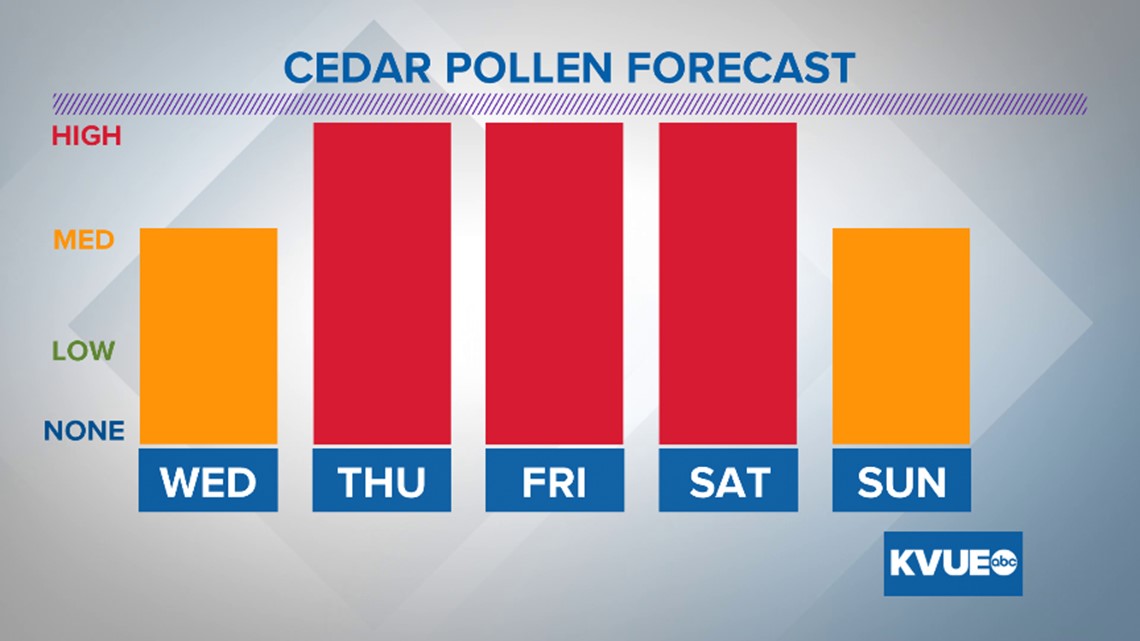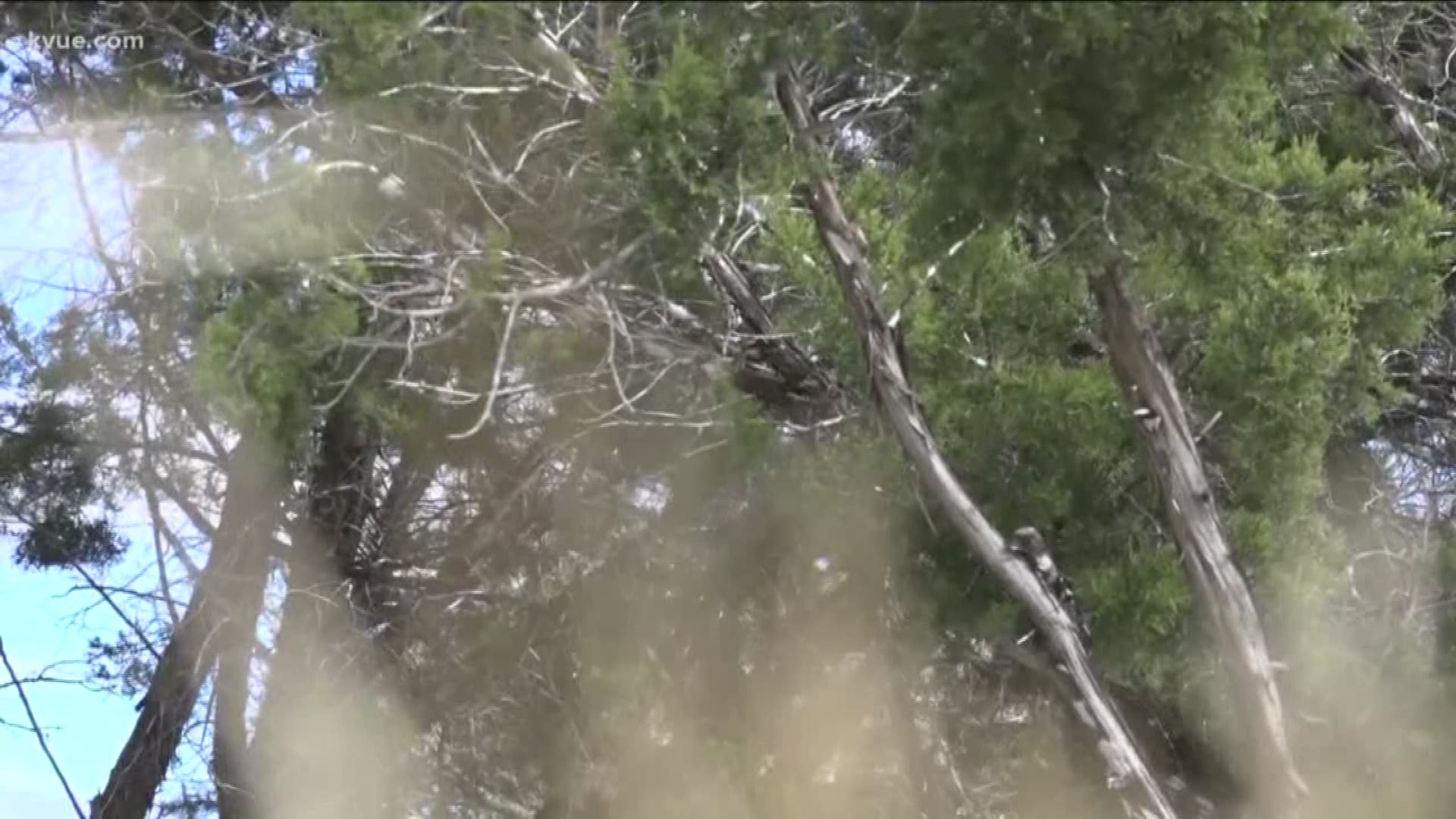AUSTIN — If you've been sneezing in the Austin area, you are not alone. It is likely due to the high amount of cedar pollen in the air.
After checking through records dating back to 1997, KVUE's Chief Meteorologist Albert Ramon stated last Thursday's cedar pollen count of 7992 gr/m3 was the highest level of cedar pollen they have recorded this early in the season.


Ramon went on to say the number was the second highest count the team has recorded in the month of December, the highest occurring Dec. 22, 2002, with a count of 10,578 gr/m3.
Cedar season is generally from Dec. 1 to around Feb. 15, with the worst of the season typically occurring during the first two weeks of January.


"The male cedar [Juniper] trees seem to be coordinated in releasing huge amounts of pollen between Dec 15th and Feb 15th each year. Dry, windy days move the pollen from tree to tree, so these are the days when cedar-allergic people have the most trouble outdoors," Dr. William Howland, with Allergy and Asthma Center of Austin, said.
RELATED:
So, why is cedar season so bad in Central Texas?
"The dense stands of cedar trees are huge repositories of pollen. When conditions are right they 'explode' releasing huge amounts of pollen at once. Central Texas seems to be very hospitable to cedars as we have more than anywhere else in the world," Dr Howland said.
A damp weather pattern can reduce the pollen count, but the only thing that can kill a cedar season is an ice storm.
"A major ice storm with ice on the trees for several days will sometimes knock the brown cones [which contain the pollen] off of the trees but ice storms are not great for Austin in general," Dr. Howland said.


"Weather plays a huge role on when cedar levels will increase. And with a dry and breezy northwest wind on Thursday, expect cedar pollen levels to spike once again by the end of the work week," Ramon said.
If cedar season is already hitting you hard, Dr. Howland said there are several things you can do now through February to start feeling better.
"The number one medicine to take now is a nasal steroid like Flonase, Nasacort or Rhinocort. These are available over-the-counter [OTC], are used once daily, generally have no side effects, but need to be used daily until Feb 15th. Non drowsy antihistamines like Allegra and Claritin can give quick relief and are also OTC. Sudafed pills can help stuffiness, but have stimulation side effects and should be avoided in people with high blood pressure and heart problems. Antihistamine eye drops like Alaway twice daily can also help. Spraying the nose with OTC salt water sprays can help remove pollen and mucus as well."

